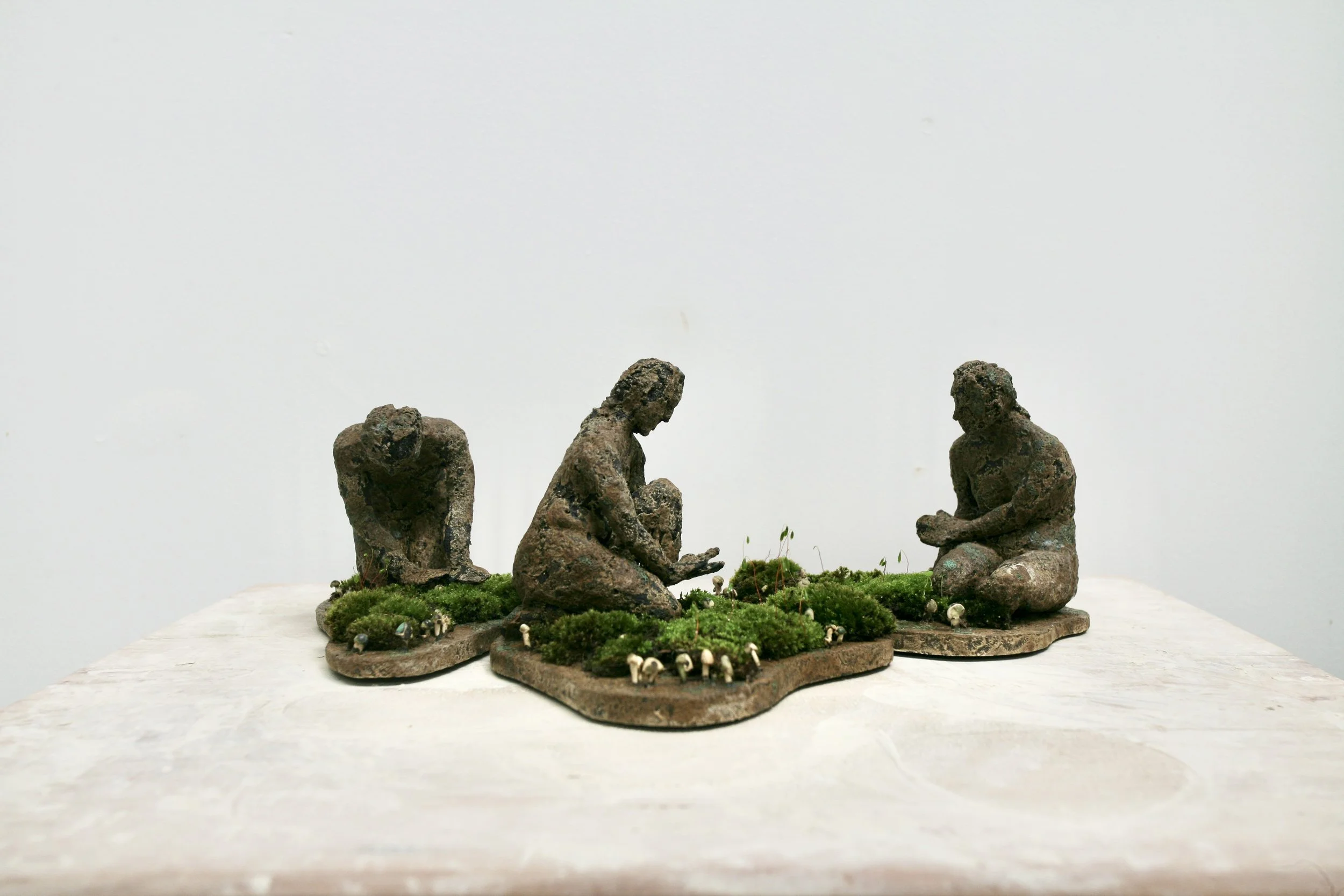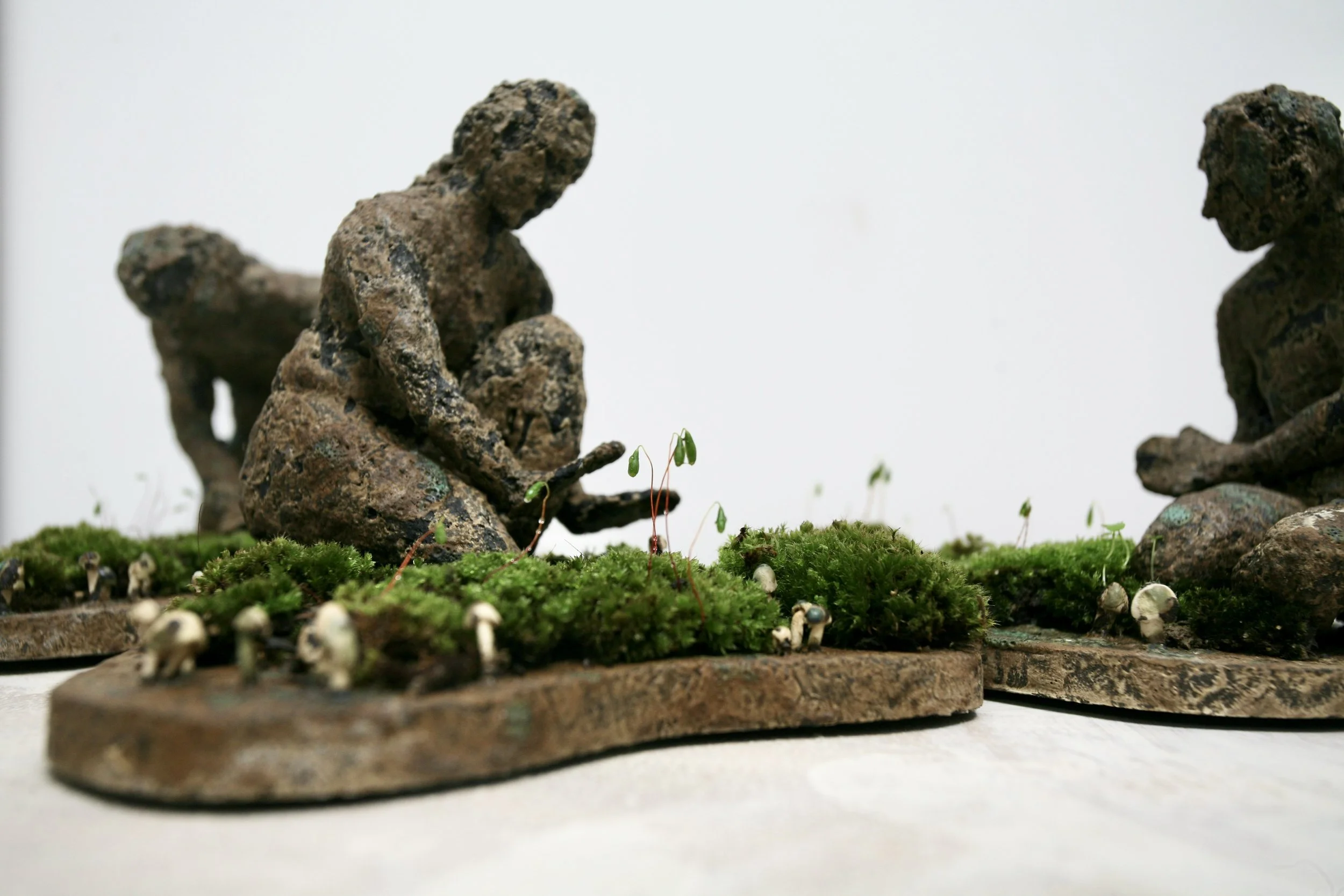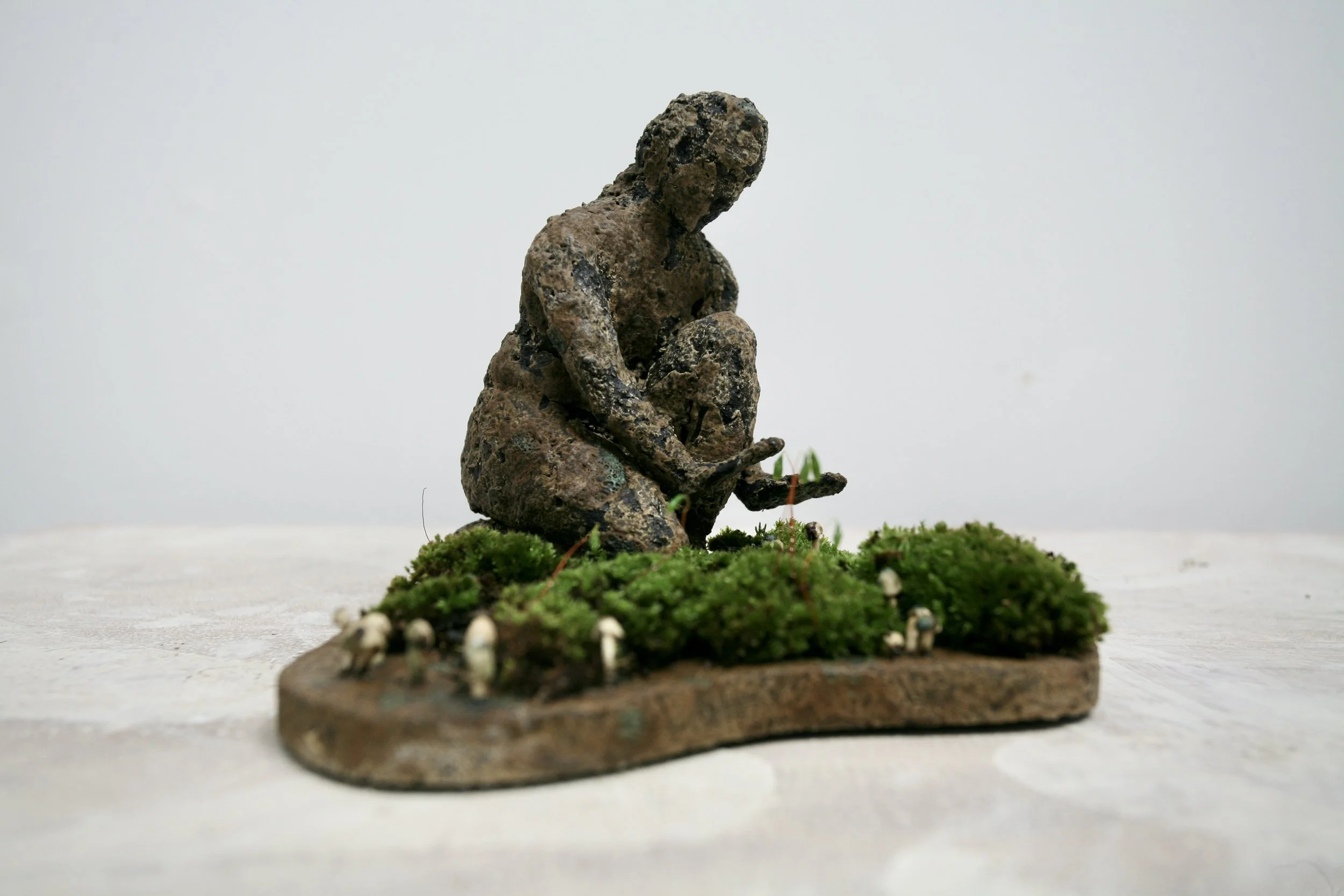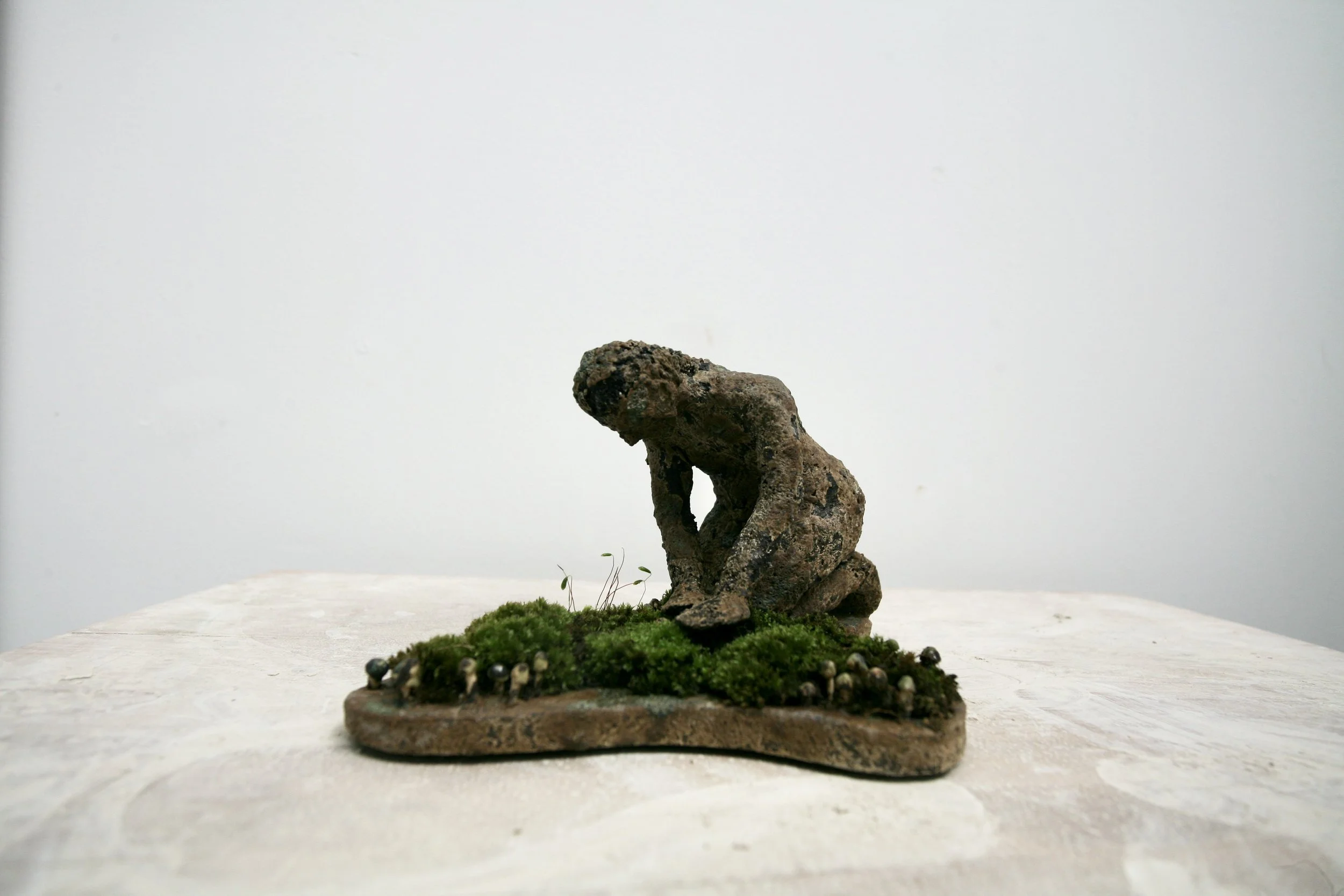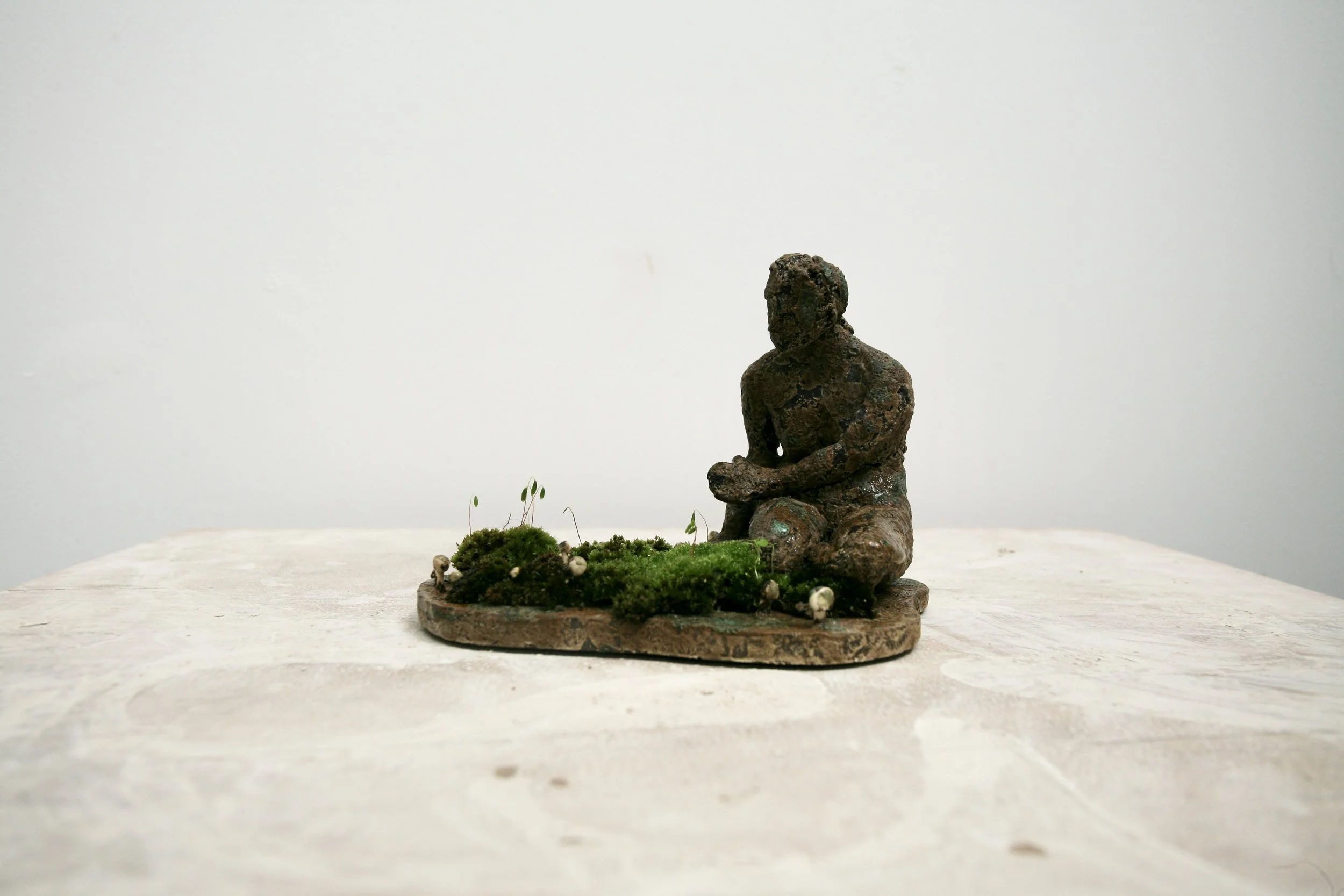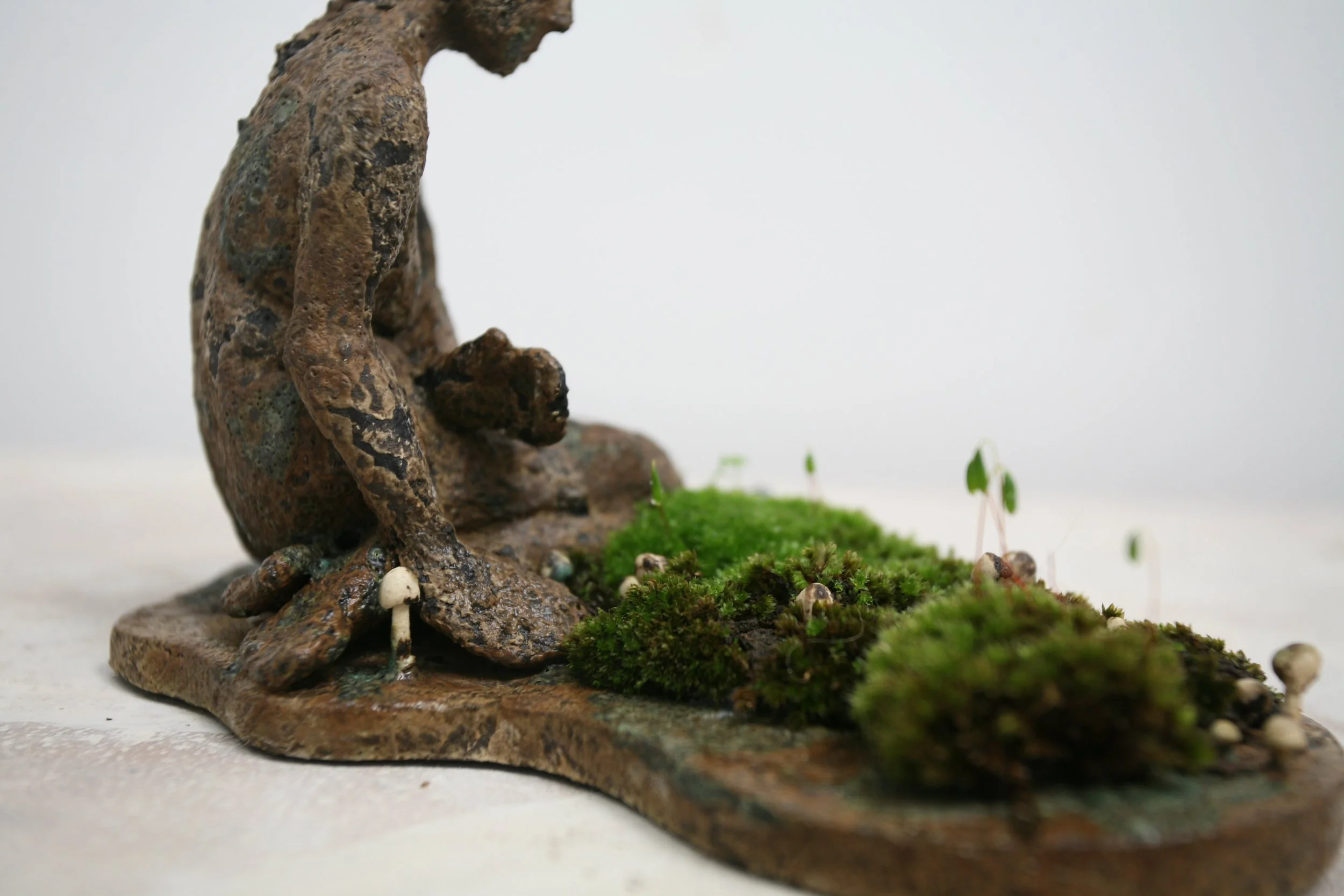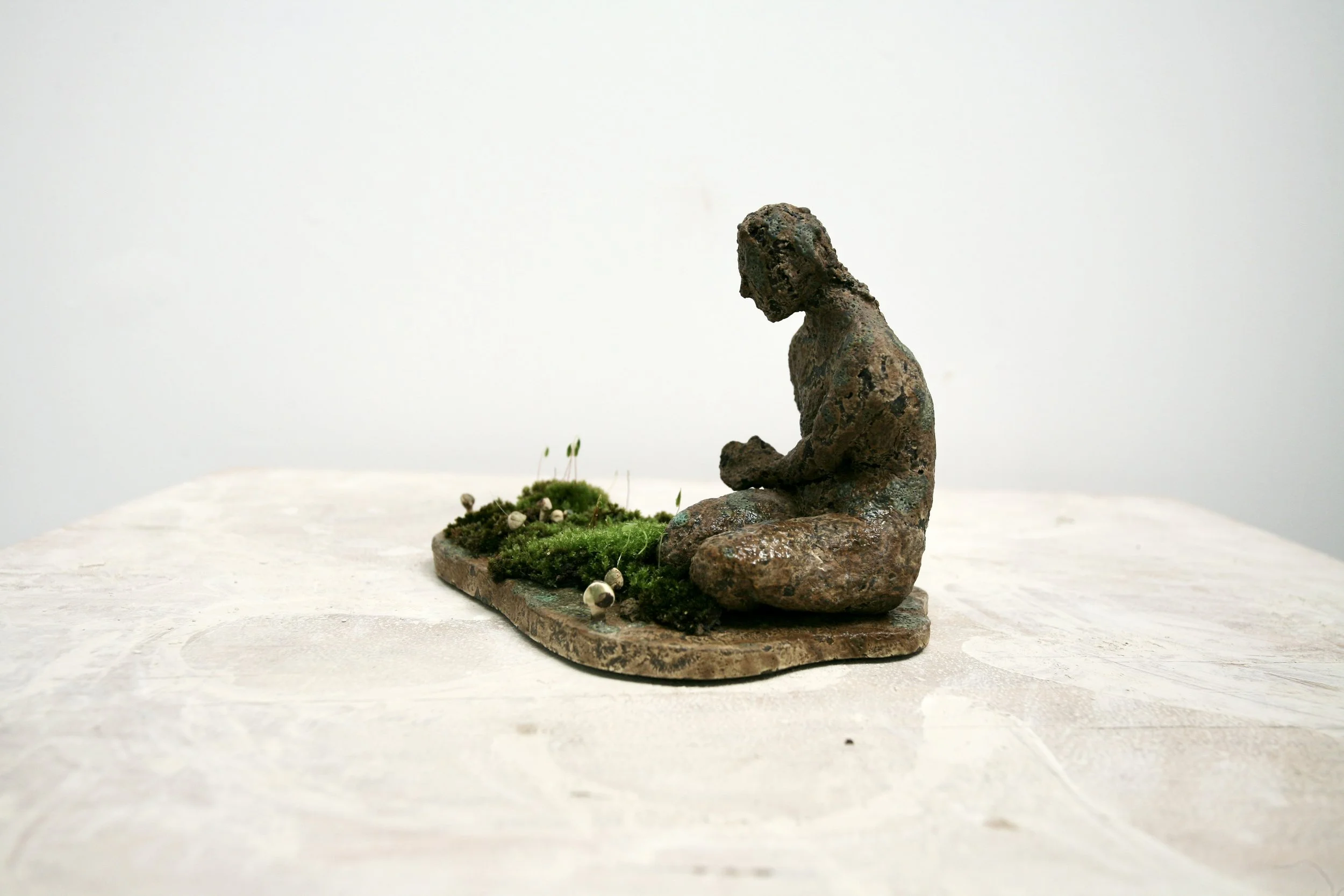Using live moss with ceramic sculptures
As you might’ve seen from my sculptures, my ceramic’s isn’t smooth or clean cut and I don’t like to my work to be perfect. Since I’ve begun making ceramics, I like my work to have that aged ‘feel’.
If you look around at a historic garden or even a sculpture that’s been left outside for years you’ll notice that moss is everywhere, it projects an ancient quality that can’t be made quickly. Algae, liverworts, and lichen run along the same groove, these are found in damp or shady places in the garden too.
Moss?
I’m talking about moss today. It’s a plant that has over 600 species in the UK, growing in all sorts of shapes, colours, and sizes; In the UK, we have a damp climate enabling moss to grow like Topsy! Where I work, I have mixture of the usual varieties; Swan’s-neck thyme moss, Silky forklet moss, Springy turf moss, Rough-stalked feather moss, Sphagnum moss, and Common striated feather-moss. That’s just the 6 varieties in my garden I know about! Moss is very tactile, soft and squidgy, but very damp and slimy too.
I wanted to collect moss for 3 garden sculptures I’d made, using the moss as the ‘garden’ part but I’d also like the most to grow around the sculptures over time. On the bases of my sculptures are fragile cup mushrooms in a white clay, blotted with my usual greeny/blue glaze on and around them.
(Image: Gardening figures hunched over a garden with cup mushrooms sprouting)





